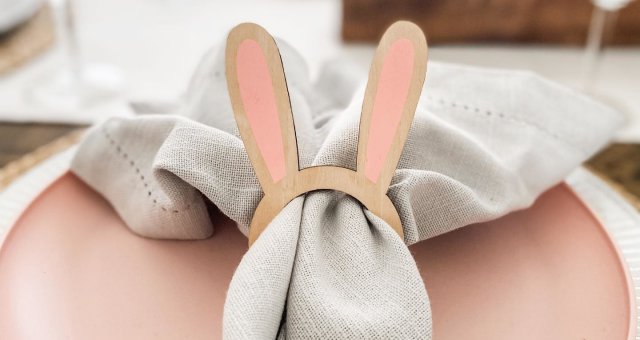As snow begins to melt and spring flowers appear instead, it’s time for Easter celebrations. You may only host a celebration on Easter Sunday itself, but most decorations can stay up for the entire season if you stick with ideas that match your existing décor. Decorating for spring and the holiday at the same time makes the most of your hard work. Aside from putting up your favorite accessories in pastel hues, you’ll likely want to color some Easter eggs and then decorate with them. Incorporate these classic symbols of spring and renewal with modern home décor in mind with our help here at Ashley.
How to Dye Easter Eggs 101
It’s simple enough to learn how to dye Easter eggs, whether you plan to use natural materials, a dye kit, or improvised dyes.
Using a Dye Kit
Dye kits will include dipping tools, cups to hold the individual dye colors, and dye tablets to color the liquid. You’ll still need to provide vinegar and water in most cases. Read the instructions on the dye kit for any specific requirements. Most kits call for using either pure white vinegar or a mix of 50:50 vinegar and water. You may want to warm the vinegar a little to get a bolder dye color, but open the windows so the smell isn’t overwhelming. Dip the eggs in the individual dye colors for anywhere from 1 minute to 10 minutes for a darker color. Lift the eggs out and let them dry. Boiled eggs that are cooled are the easiest to dye, but raw eggs can also be dyed for blowing.
Three Easy DIY Dyeing Options
Food coloring: Using vinegar or vinegar and water just like for the kit, set out a number of cups or bowls of the liquid and add 3 to 10 drops of food coloring per container. Mix the liquid and dip the eggs as before to dye them.
Onion skin dyes: Boil yellow or red onion skins, or a mix of both, in a small pot with a 50:50 of water and vinegar. Then let the mixture cool and dye the eggs with the dipping method. Red skins make a fuchsia color, yellow skins produce a gold color, and mixed together they make an orange.
Blueberries and beets: Simmer frozen blueberries in 2 cups of water for 15 minutes, then strain the fruit out. Add about 1 cup of vinegar and soak the eggs for at least an hour in the cooled mixture. It will produce a light blue color. Canned or frozen beets and the juice can be used the same way to produce a light pink color.
4 Easter Egg Decorating Ideas
Here are the Easter decorating tips you need to make your eggs shine.
1. White Crayons
When basic Easter egg decorating isn’t enough, raid the kids’ toy box for a white crayon. It looks invisible against the white eggshell when you’re drawing. Yet the wax will resist any dye you use, creating a light or white colored design after the dye dries. You can surprise your kids by writing out their names on different eggs since they won’t see it until they dip and lift them.
2. Stickers and Masking Tape
Putting stickers on the dry dyed eggs is a great way to finish off the decorating. Stickers can also play a role in the dyeing stage as a way of blocking off color. Leave white shell exposed by placing a sticker on before dyeing, then peel it off when the dye dries. You can dye the bare egg a light color, dry it, add some masking tape to block off a pattern, then dye it a darker color for a complex design.
3. Googly Eyes
Nothing brings a sense of whimsy to your colorful Easter egg collection than a few googly eggs.
4. Dip Dyes and Painted Patterns
For an ombre or two-toned effect, try getting a sturdier plastic or wire dipping tool and dipping half the egg at a time in different dyes. Set up similar colors in different concentrations for a variegated effect. After the eggs dry, practice more Easter egg decorating ideas by painting right on the surface with tempera or acrylic paint. Cleaned and blown Easter eggs can be coated with acrylic spray sealant as well so they last longer as a decoration.
Easy Easter Party Ideas
Celebrations might start with decorated Easter egg ideas, but they need more than just seasonal decorations. Consider your menu for your guests, whether that’s a classic ham or something more unusual, like a baked potato bar. Folding tables and chairs are particularly versatile for this kind of gathering because they work outdoors for the egg hunt as well as inside. Outdoor Easter party ideas tend to focus on activities for children, but setting up shade canopies and the right patio furniture can keep everyone comfortable.
Decorating With Easter Eggs
1. Hang Them From a Tree or Branches
Arrange blown egg shells on a collection of freshly pruned branches, preferably with spring buds at their tips. Easter trees are also available if you don’t have any sources for branches at hand.
2. Create an Egg Garland
Put together a spring-colored garland of plants like eucalyptus, laurel, pear blossoms, and other seasonal beauties, and then attach your favorite dyed eggs to it. It’s a great way to top a mantel or dress up an archway before a big Easter party.
3. Nestle Them in a Faux Nest
Ordering faux birds’ nests or putting together your own with some dried botanical materials and sphagnum moss can create the perfect solution for how to decorate with Easter eggs. These classic Easter decorations shouldn’t be made with real birds’ nests because they have bacteria and mites in them.
Browse Types of Easter Décor at Ashley
There’s such a wide range of seasonal spring décor and Easter decorations here at Ashley that it has to be experienced for yourself. Find the pastel tablecloths, egg-themed kitchen accessories, and party supplies you need to throw the perfect celebration. We’re happy to help you with any furniture refreshes you might want to do before inviting guests in for the spring as well.





